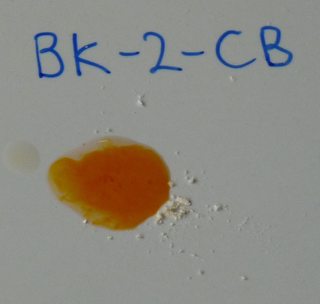King Kong
Bluelighter
Welcome to the βK-2C-B (bk-2C-B) Thread

Wikipedia: Bk-2C-B
(1-(4-bromo-2,5-dimethoxyphenyl)-2-aminoethan-1-one)
Marquis reagent test result


[original post:]
Wikipedia: Bk-2C-B
(1-(4-bromo-2,5-dimethoxyphenyl)-2-aminoethan-1-one)
Marquis reagent test result


In these times of ketones, I wondered if anyone had tried bk-2cb?
I think is correct name is 2-amino-1-(4-Bromo-2,5-dimethoxyphenyl)ethan-1-one, right? I cann't find any informations on this molecule!
I think it can be very psychoactive. Moreover, as the 2c-b is illegal, Rc's vendors could used bk-2cb as an alternative "legal"! But I don't see things like this... What is the reason?
And, if someone have informations...
Thanks for you answers!
Hope I don't say stupids things... And sorry for my poor english!
Last edited by a moderator:





